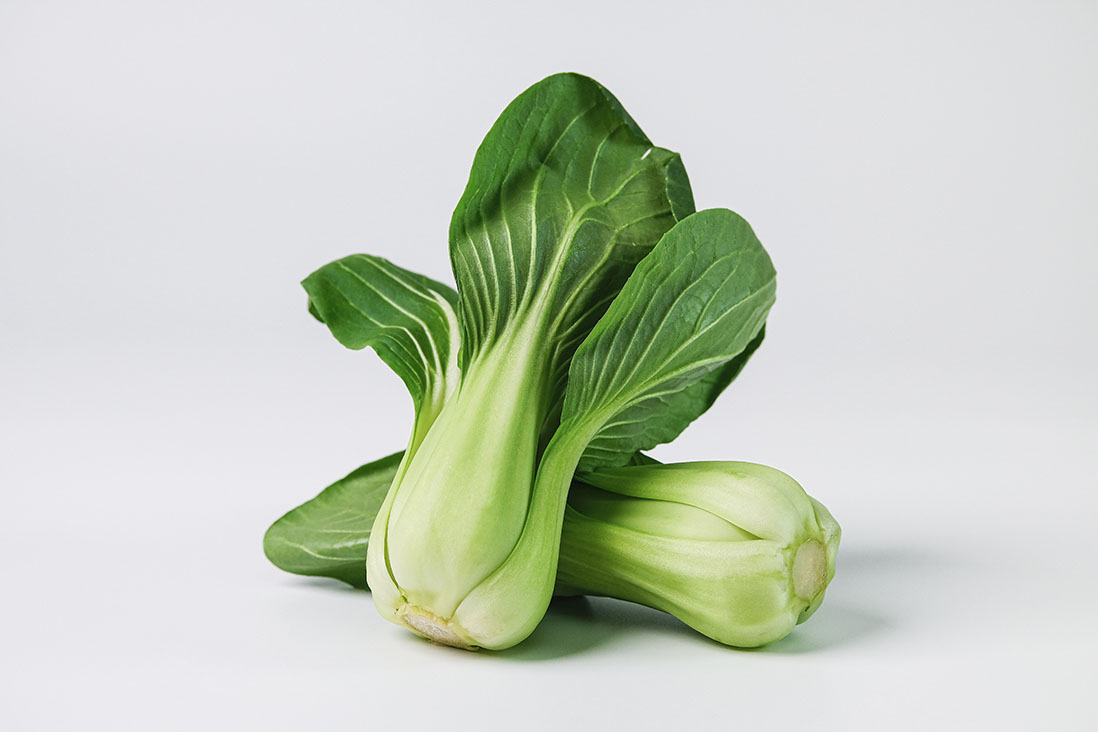Good Things Grow in Small Packages
Part of the extended Brassicaceae family of edibles that includes cabbage, mustard greens, cauliflower, broccoli and radish, dwarf white-stemmed pac choi’s closest relative is its larger more well-known cousin bok choi. Bok choi (the original) was grown and cultivated as far back as the 5th century throughout Asia. As people left mainland China to explore the world, they took it with them. The green vegetable was introduced to Europe in the mid-18th century and by the 19th century bok choi plantations were thriving in Japan and Malaysia. Easily cross-bred, new strains of the vegetable have been developed over time including dwarf white stemmed pac choi.
Katie McGillivray, plant expert and horticultural therapist with Earthwise Society in Delta, is a dwarf white stemmed pac choi enthusiast, especially for the novice gardener.
“Suitable for the novice gardener, I would recommend it for its short growth time and versatile culinary potential,” she says. “As a sensory plant, it not only captures the sense of taste but the deep rich green leaves and white stems also create contrast and visual interest in the edible garden.”
As a biennial plant, dwarf white-stemmed pac choi will produce a flower every second season, but for home gardeners, it’s the seasonal harvest of greens that makes this plant worth the effort.
Started from seed or small plugs bought at the garden centre, dwarf white-stemmed pac choi is hardy to seven degrees Celsius and can grow, with protection, on B.C.’s south coast even in winter months. Covering this cool season vegetable with a polyurethane growing tunnel, using a cold frame or planting it in a container and keeping it sheltered on a patio or in a greenhouse is a sure way for the home grower to enjoy it fresh from the garden all year.
“Pac choi is a particularly great choice for urban gardeners as it can grow in small spaces such as containers,” McGillivray says.
Reaching a height of only 10 to 30 centimetres, its shallow roots and fast growth rate mean that from seed to maturity the plant takes as little as eight weeks.
If growing from seed, direct sow into the ground and sow one and a half centimetres, deep approximately seven to 10 centimetres apart in rows that are spaced 30 centimetres apart. For a late spring harvest, sow the seeds six to eight weeks before the last frost, making sure to cover them with leaf mulch or compost to keep them protected. For late fall or early winter harvest, sow in late summer. Pac choi enjoys well-draining soil and at least six hours of sun a day. The soil should remain moist but not overly saturated as this will cause root rot.
If flower buds appear at the centre of the plant and a stem begins to form, it means the plant is beginning to bolt. Snip off the flower head immediately. If the plant is allowed to flower, the mild spicy flavour quintessential of dwarf white-stemmed pac choi will quickly become bitter and unpalatable. Bolting can occur with fluctuations in the weather or as soon as the warmer weather sets in. This can happen in late spring or in the fall if temperatures remain warm into October.
Full of fibre, vitamins C, E and beta carotene, dwarf white stemmed pac choi’s crisp crunchy leaf stalks combined with the sweetness of its shoots make it a great choice for stir fries and soups.
“My most recent experience with dwarf white-stemmed pac choi was having it slathered in Red Russian garlic and sesame oil paired with locally caught B.C. salmon,” McGillivray says.
“The journey from harvest to the plate was one of mindfulness,” she says. “From cutting the crunchy leaves off the stalk and washing the garden soil (and a slug) off in the kitchen sink, to mincing my homegrown garlic and sautéeing it all together, while being conscious that overcooking would dampen the flavour and texture, I found the gentle leaves the perfect vessel for flavour and the stalks a delightful crunch.”
Grilled pac choi with garlic butter
6 to 8 dwarf white-stemmed pac choi, washed, trimmed and cut in half
1/3 cup butter
1 clove garlic, minced
1/8 teaspoon garlic powder
Pinch of black pepper
Pinch of salt
Crushed chilis, garnish (optional)
In a small pot, add the butter, garlic and garlic power. Heat until the butter has melted. Reserve.
Preheat your grill to medium-high. Clean and oil lightly.
Place the trimmed and washed pac choi halves in a mixing bowl. Add a pinch of salt and pepper and toss.
Place the pac choi face down on the grill and brush with garlic butter. Cook for one to two minutes until the leaves start to char. Flip the pac choi and repeat the process.
Remove from the grill and plate with crushed chilis to serve.





